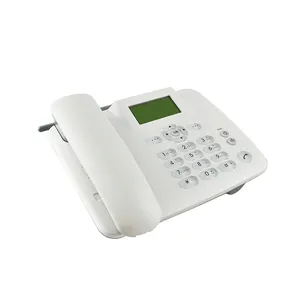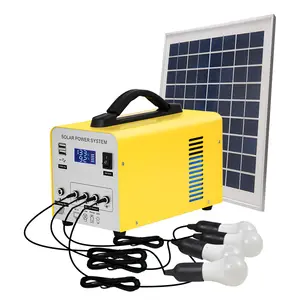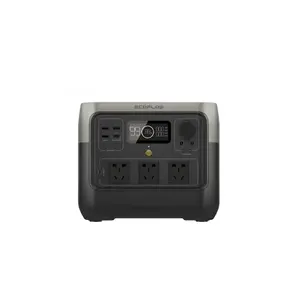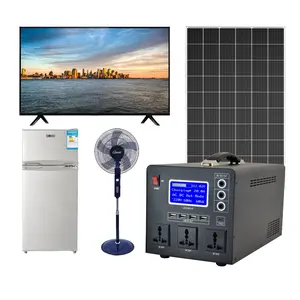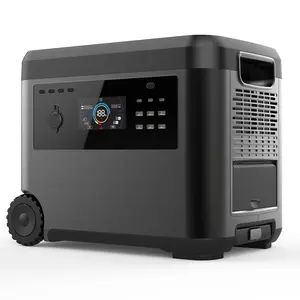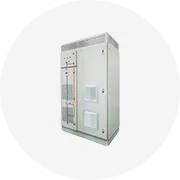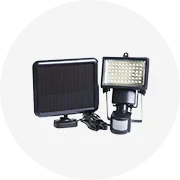Phổ biến trong ngành của bạn






Nhà máy tùy chỉnh Polymer Pin 30mAh 190mAh 500mAh 401012 432025 mềm gói Lithium LiPo pin
0,89 US$ - 1,19 US$
Đơn hàng tối thiểu: 3 Cái







Oem 451215 501235 500mAh 1500mAh 600mAh 20000mAh Li-Polymer lithium có thể sạc lại li ion polymer pin 3.7V LiPo pin
1,40 US$ - 1,80 US$
Đơn hàng tối thiểu: 5 Cái







OEM 103040 523450 502030 402035 803450 105050 Sạc 1800MAh Li-polymer Pin 3.7V Lipo
0,55 US$ - 1,98 US$
Đơn hàng tối thiểu: 100 Cái







Bán buôn 3.7V 750mAh pin lithium Pouch 952238 Li-Polymer hình chữ nhật LiPo pin
0,89 US$ - 1,40 US$
Đơn hàng tối thiểu: 3 Cái







Tùy Chỉnh OEM 1800Mah 1200Mah 850Mah 500Mah Sạc 103450 Li Ion Li-ion Lithium Polymer 3.7V 2200Mah Lipo Pin
0,55 US$ - 1,98 US$
Đơn hàng tối thiểu: 100 Cái






Tùy Chỉnh Sạc 3.7V 450Mah 135Mah 1500Mah 1600Mah 2500Mah 2900Mah Li-Polymer Li Po Pin Lithium Polymer
0,70 US$ - 2,00 US$
Đơn hàng tối thiểu: 1 Cái







Hỗ trợ tùy biến 3.7V 825064 605571 3090110 2900mAh 3000mAh Li Polymer Pin
3,60 US$ - 5,00 US$
Đơn hàng tối thiểu: 2 Cái






Chất lượng cao 103759 1003758 Li Ion Polymer Pin 3.7V 2900mAh lithium có thể sạc lại Polymer Pin
3,50 US$ - 4,20 US$
Đơn hàng tối thiểu: 20 Cái






Giá thấp có thể sạc lại 3.7V 2600mAh 2900mAh Li Polymer Pin lithium ion di động 3200mAh Li Ion pin 18650
1,29 US$ - 2,00 US$
Đơn hàng tối thiểu: 5 Cái






Hunan aukpower Li ion LiPo pin 2800mAh 2900mAh 3.7V 7.4V 2S 825080 904070 3000mAh lithium có thể sạc lại Polymer Pin
2,38 US$ - 3,00 US$
Đơn hàng tối thiểu: 100 Cái






Trung Quốc Thương hiệu hình trụ có thể sạc lại Li Ion pin 18650 pin lithium Sẵn sàng vận chuyển
Sẵn sàng vận chuyển
 Sẵn sàng vận chuyển
Sẵn sàng vận chuyển1,00 US$ - 1,30 US$
Đơn hàng tối thiểu: 1 Cái
Vận chuyển mỗi chiếc: 17,50 US$
Các tìm kiếm liên quan:
50000mah li polymer pin3900mah li polymer pin2000mah li polymer pin150mah li polymer pin300mah li polymer pin560mah li polymer pin200mah li polymer battery640mah li polymer pin180mah li polymer pin400mah li polymer pin7 4v 2800mah li polymer pin7.4v 2800mah li polymer pin2250mah li polymer pin700mah li polymer pin350mah li polymer pin






Bán Buôn Li-Ion Polymer Pin 3.7V 7.4V 2800Mah 3.7V 2900Mah Lipo Pin 984058
0,90 US$ - 2,00 US$
Đơn hàng tối thiểu: 10 Cái





Bộ Pin Lithium Ion Tùy Chỉnh 703450P 1S2P 3.7V 2900MAH Pin Li-Polymer Có Thể Sạc Lại
6,18 US$ - 9,10 US$
Đơn hàng tối thiểu: 2 Cái






Đèn pin Li Ion pin 1400mAh 3500mAh 4500mAh 6800mAh 8800mAh 14650 26650 3.7V Li-ion có thể sạc lại LiPo pin
0,90 US$ - 1,20 US$
Đơn hàng tối thiểu: 100 Cái






Chất lượng cao giá rẻ LiPo pin 3.7V 2900mAh lithuim polymer pin di động
1,95 US$ - 2,00 US$
Đơn hàng tối thiểu: 2500 Gói





Pin Lithium-Ion INR18650 2600Mah 3000MAh 3500MAh Pin Lithium-Ion Pin Lithium 18650
1,10 US$ - 1,20 US$
Đơn hàng tối thiểu: 1 Cái






Power Tool Pin Lithium Li Ion 3C 10C 2000MAH 2600MAh 2900MAh 3000MAH 3400MAh 35A GEB 18650 Bộ Pin Li-ion 18650 Cell
0,85 US$ - 1,29 US$
Đơn hàng tối thiểu: 10 Cái






Pin có thể sạc lại cho Tai nghe Bluetooth xe ghi Router 103565 3.7V Polymer Pin 2900mAh pin lithium ion
2,17 US$ - 2,57 US$
Đơn hàng tối thiểu: 100 Cái












Nhà máy bán 3.7V lp755060 LiPo pin lithium với kết nối lp604250 3.7V 3000mAh pin lithium polymer gói
3,23 US$ - 3,43 US$
Đơn hàng tối thiểu: 10 Cái






18650 Lithium Ion pin 3500mAh 3.7V Samsung 35e Li-ion có thể sạc lại akku di động
3,30 US$ - 3,85 US$
Đơn hàng tối thiểu: 20 Cái






Giao Hàng Nhanh Pin Máy Hút Bụi Li-ion 18650 5C 10C 15C 14.8V 2200Mah
7,40 US$ - 10,80 US$
Đơn hàng tối thiểu: 1 Cái






Trung Quốc Nhà Cung Cấp Có Thể Sạc Lại Mỏng Lipo 3.7V 9858102 Lithium Polymer Pin Li-polymer 3.7V Pin
1,80 US$ - 2,80 US$
Đơn hàng tối thiểu: 1000 Cái






Pin Sạc Lithium-Ion Polymer ZCF984058 2900MAh 7.4V Cho Thiết Bị Đeo Y Tế Vòng Đeo Thể Hình
3,00 US$ - 3,30 US$
Đơn hàng tối thiểu: 100 Cái






Chất Lượng Cao Li Ion Di Chuyển 2500 3500 5000 3.7V 2900MAh 2600Mah POS Thiết Bị Đầu Cuối Pin Lithium Ion Cho Ingenico F26402376
2,45 US$ - 3,16 US$
Đơn hàng tối thiểu: 200 Cái



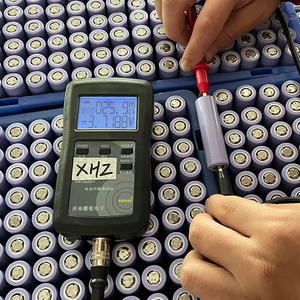


Hot bán dynavolt 3.7V 18650 2400mAh 2600mAh 2900mAh có thể sạc lại Li-ion pin cho các công cụ điện
0,79 US$ - 0,85 US$
Đơn hàng tối thiểu: 1000 Cái






Nhà Máy Bán Buôn Pin Lithium Ion 72V 28ah Cho Xe Điện
401,00 US$ - 436,00 US$
Đơn hàng tối thiểu: 5 Bộ






Pin Lithium Ion Trực Tiếp Từ Nhà Máy 804262 2900MAh Có Thể Sạc Lại Với PCM Cho Động Cơ Điện Tử Ngân Hàng Điện
2,55 US$ - 2,89 US$
Đơn hàng tối thiểu: 100 Cái






Pin Loa Không Dây Mới Cho Bose SoundLink Mini 061385 061386 063404 Pin Lithium Ion Thay Thế
16,20 US$ - 18,00 US$
Đơn hàng tối thiểu: 50 Cái






3.7V 2900mAh Li-Polymer có thể sạc lại thay thế Z9 V3 Z9 vega3000 3 gam POS Hệ thống thiết bị đầu cuối Pin cho lâu đài IP604355-2P
9,30 US$ - 11,50 US$
Đơn hàng tối thiểu: 50 Cái






835258 2900mAh 3.7V Li-ion polymer pin với NCM anode cho đồ chơi công cụ điện xe Golf điện tử tiêu dùng thuyền
Sẵn sàng vận chuyển
1,98 US$ - 2,83 US$
Đơn hàng tối thiểu: 999 Cái
Vận chuyển mỗi chiếc: 0,27 US$






Pin Lithium AA Eunicell Ultimate 1,5V 3000MAh FR6 Li-FeS2 Số Lượng Lớn
Sẵn sàng vận chuyển
0,75 US$ - 0,76 US$
Đơn hàng tối thiểu: 200 Cái
Vận chuyển mỗi chiếc: 2,33 US$






KC 18650 Li Ion Di Động Nhà Máy Gói Siêu Mỏng Prismatic 3.7V 18600 Pin Lithium Prismatic Litium Polymer
0,10 US$ - 0,60 US$
Đơn hàng tối thiểu: 1 Cái



Pin Thay Thế Cho TBL-53B3000 TP-Link M7650TBL-53A3000 3.8V/MA
Sẵn sàng vận chuyển
6,90 US$ - 8,11 US$
Đơn hàng tối thiểu: 5 Cái






Thâm Quyến Sạc Nhanh Li-pin Power Tools 503450 042030 3.7V 500Mah 180Mah 2900Mah Li Ion Lithium Polymer Pin
1,50 US$ - 2,50 US$
Đơn hàng tối thiểu: 3000 Cái






3.7V 2700mAh 2900mAh 3000mAh có thể sạc lại Li Ion Polymer Pin
Sẵn sàng vận chuyển
2,85 US$ - 4,00 US$
Đơn hàng tối thiểu: 5 Cái
Vận chuyển mỗi chiếc: 7,10 US$





Lithium Polymer Pin có thể sạc lại Li-ion pin 3.7V 2900mAh 1150mAh 114551 102040 802885 504050 LiPo pin
3,90 US$ - 7,50 US$
Đơn hàng tối thiểu: 2 Cái





Quảng Trường OEM Lớn 3.7V 3000Mah 2000Mah 2600Mah 2900Mah 3550Mah 3600Mah Li-Po Lipo Pin Có Thể Sạc Lại Pin
3,00 US$ - 10,00 US$
Đơn hàng tối thiểu: 1 Cái






Bán Sỉ Pin Lithium Hình Trụ INR 18650 7.4V 2600MAh Bộ Pin Lithium Có Thể Sạc Lại 3200Mah Bộ Pin 7.4V
3,20 US$ - 4,30 US$
Đơn hàng tối thiểu: 5 Cái
Các danh mục hàng đầu
Giới thiệu về 2900mah li polymer pin
Công nghệ đang thay đổi cách mọi người sống hàng ngày. Như vậy, đáng tin cậy. 2900mah li polymer pin trên Alibaba.com mang lại độ bền tốt hơn cho bất kỳ thiết bị nào cần sản lượng điện tốt hơn. Các mẫu khác nhau có các thông số kỹ thuật khác nhau để phù hợp với khuyến nghị của nhà cung cấp. Bền chặt. 2900mah li polymer pin phải nhanh chóng được tìm thấy và có thể dễ dàng thay thế. Với nhiều loại vật liệu sản xuất, bạn có thể lựa chọn tốt hơn khi mua để sử dụng.
Do tiến bộ công nghệ, nhiều thiết bị cần được cung cấp điện liên tục. Đáng tin cậy. 2900mah li polymer pin sẽ tồn tại lâu hơn các thiết bị chủ để có dịch vụ tốt hơn. Tương tự, các sản phẩm hỗ trợ này tương thích với các thành phần liti và axit chì. Do đó, khả năng tương thích giữa các thiết bị và các tiện ích hỗ trợ là rất phù hợp.
Cho dù đó là thiết bị gia đình văn phòng phẩm hay pin sạc dự phòng di động, có thể sạc lại. Các phần 2900mah li polymer pin trên Alibaba.com giúp đảm bảo rằng chúng cung cấp cho người dùng dịch vụ tối ưu. Các sản phẩm này có thể chịu được nhiệt độ cao và ăn mòn. Tuổi thọ dài mang lại dịch vụ tốt hơn trước khi chúng cần được thay thế. Một lần nữa, các cơ sở lưu trữ phải còn nguyên vẹn để giảm va đập mạnh và hư hỏng. Chúng cũng đi kèm với cáp kết nối để có dịch vụ tốt hơn.
Đối với nhu cầu điện quy mô lớn như xe ba bánh và nhạc cụ, kỹ thuật số. 2900mah li polymer pin cung cấp một bước đệm tài chính. Alibaba.com cung cấp một nền tảng để đảm bảo độ tin cậy khi mua hàng. Nhiều người bán trên toàn cầu phân phối sản phẩm trong khung thời gian hợp lý để tạo sự thoải mái cho khách hàng. Cuộn qua các danh mục để biết các thiết bị tương thích nhất và các giao dịch tài chính.
Do tiến bộ công nghệ, nhiều thiết bị cần được cung cấp điện liên tục. Đáng tin cậy. 2900mah li polymer pin sẽ tồn tại lâu hơn các thiết bị chủ để có dịch vụ tốt hơn. Tương tự, các sản phẩm hỗ trợ này tương thích với các thành phần liti và axit chì. Do đó, khả năng tương thích giữa các thiết bị và các tiện ích hỗ trợ là rất phù hợp.
Cho dù đó là thiết bị gia đình văn phòng phẩm hay pin sạc dự phòng di động, có thể sạc lại. Các phần 2900mah li polymer pin trên Alibaba.com giúp đảm bảo rằng chúng cung cấp cho người dùng dịch vụ tối ưu. Các sản phẩm này có thể chịu được nhiệt độ cao và ăn mòn. Tuổi thọ dài mang lại dịch vụ tốt hơn trước khi chúng cần được thay thế. Một lần nữa, các cơ sở lưu trữ phải còn nguyên vẹn để giảm va đập mạnh và hư hỏng. Chúng cũng đi kèm với cáp kết nối để có dịch vụ tốt hơn.
Đối với nhu cầu điện quy mô lớn như xe ba bánh và nhạc cụ, kỹ thuật số. 2900mah li polymer pin cung cấp một bước đệm tài chính. Alibaba.com cung cấp một nền tảng để đảm bảo độ tin cậy khi mua hàng. Nhiều người bán trên toàn cầu phân phối sản phẩm trong khung thời gian hợp lý để tạo sự thoải mái cho khách hàng. Cuộn qua các danh mục để biết các thiết bị tương thích nhất và các giao dịch tài chính.
